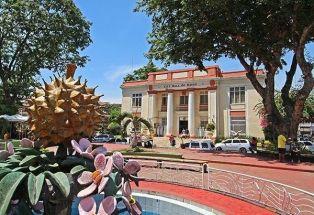My introduction to Tagalog movies
MANILA, Philippines - Like many other normal Filipinos (mis?)educated in English-speaking schools, brought up in Hollywood movies, it was late in life that we discovered the wonders of Philippine movies. While in high school and way into college, we watched Audrey Hepburn movies with a passion, had memorized almost every movement and scene of Roman Holiday and Wait Until Dark, weeping in one and frightened in the other. We didn’t care about her leading men; we were Audrey Hepburn fans. We cared even less for her directors; they didn’t exist as far as we and everyone else were concerned.
It was only when a pudgy rotund man called Alfred Hitchcock marketed himself to be on the same level as his star, that the world took notice that there was such a creature as a director, and that he was to be respected and admired. Hitchcock came up with such classics as Rear Window and Dial M for Murder which we watched with schoolmates, admiring the classic beauty of Grace Kelly and buying movie magazines to put them in our scrapbooks where she began to eclipse Hepburn. And we remembered Hitchcock for that quirk of appearing in every picture he directed, so it became a game among us to try and find him in the movie. That is why directors the world over have Hitchcock to thank for bringing the director up front on the marquee.
This was in the ’50s and late ’60s at the same time that the great Filipino directors Manuel Conde, Bert Avellana and Gerry de Leon were making waves abroad, winning Best Director, Screenplay and Actor awards like Avellana for Anak Dalita and Badjao, De Leon for Ifugao at the Southeast Asian Film Festival. Conde, of course, was the first Filipino in Venice with his Genghis Khan, while Avellana was the first Filipino at Cannes with Kandelerong Pilak (Silver Candlestick). But unhappily, we were unaware of the gigantic steps these brilliant filmmakers were making in Philippine cinema, even more unaware that their names as auteur came ahead of those in Hollywood.
Our first introduction to Tagalog movies was through theater, specifically PETA (Philippine Educational Theater Association) where our friend and UP (University of the Philippines) classmate Lino Brocka was an apprentice and go-fer all rolled into one. We would watch rehearsals at the Fort Santiago Theater, hobnob with the actors, writers, designers, staff, and drank in a new and exciting world of Philippine theater. Until soon, Brocka had gone up the ladder and was directing plays, eventually directing movies and getting recognized for them that we even got to join him in Cannes with Phillip Salvador when his film Jaguar was chosen in competition.
Even then, our education in the Tagalog language and in the history of Philippine cinema still left much to be desired. Hollywood pictures were still flooding our theaters, but at the same time Filipino directors like Brocka, Ishmael Bernal, Mario O’Hara, Chito Roño, Peque Gallaga, Celso ad Castillo, Lupita Concio, Maning Borlaza, Totoy Buenaventura, Carlitos Siguion Reyna, Gil Portes, Elwood Perez, Butch Perez, Joey Gosiengfiao, Mel Chionglo, Tikoy Aguiluz, Mike de Leon, Laurice Guillen, Marilou Diaz-Abaya, Maryo J. de los Reyes, Joel Lamangan and Joey Reyes were churning out significant oeuvres one after the other at a speed that only the Filipino could. Simultaneously, lovers of cinema like poet Virgie Moreno brought in European classics and through the Salaguinto Film Society introduced us to Eisenstein, Fellini, Truffaut, Bunuel, Almodovar, Herzog and Godard. We were thankful that our education in film was getting somewhere.
During the brand-new decade of the 21st century, the movie industry in the country went on a steady decline. It almost seemed that all the advances we had made in the past had been quickly obliterated. As the quality of life declined, the movies we made mirrored this decline as movies are supposed to do. Poverty, corruption, violence and lawlessness, loss of morals, lack of confidence in ourselves was the rule of the day. Hordes left the country to work abroad. Their dysfunctional families were floundering in the newest sort of dilemma, even as the country celebrated the OFWs, the new-day heroes for propping up the country’s economy. And we found all these in the movies of the period, both in the fluffy mainstream escapist love stories and comedies, and in the blossoming of a new breed of historian-storyteller — the indie filmmaker. These indie directors will be the saviors of the industry. And our history would have come full circle.
(For comments, call 571-1569, text 0917-8991835 or e-mail at [email protected].)
- Latest
- Trending



















 Exclusive
Exclusive













